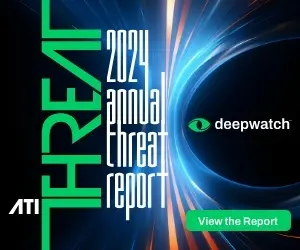
GandCrab is a highly notorious family of ransomware that first emerged in January 2018 and rapidly became one of the most prevalent and technically sophisticated ransomware-as-a-service (RaaS) offerings in the cybercriminal ecosystem. Operated on underground forums, GandCrab’s developers supplied affiliates with customizable ransomware payloads, enabling large-scale, distributed attacks on organizations and individuals around the globe. GandCrab is distinguished by its use of advanced evasion techniques, frequent code updates, adaptive ransom demands, and integration with various exploit kits and initial access vectors. By mid-2019, the operators claimed to have retired after allegedly making over $2 billion, but GandCrab’s legacy continues to influence modern ransomware operations and RaaS models.
- Ransomware-as-a-Service (RaaS) Model: GandCrab’s developers provided the ransomware framework, payment infrastructure, and technical support for affiliates, who carried out infections in exchange for a revenue share. This model lowered the barrier to entry for cybercriminals and rapidly expanded GandCrab’s victim base, affecting enterprises, SMBs, and individuals alike.
- Adaptive Encryption and Payment Mechanisms: GandCrab leveraged strong encryption algorithms (such as Salsa20 and RSA) to lock victim data, appending distinctive file extensions (e.g., .GDCB, .KRAB). Ransom notes demanded payment in cryptocurrencies (primarily DASH and later Bitcoin), often tailoring the demands to the victim’s geography and organizational profile.
- Sophisticated Delivery and Evasion: GandCrab was distributed via phishing emails, malicious attachments, exploit kits (notably Rig and GrandSoft), and compromised remote desktop services. It implemented obfuscation, anti-VM, anti-debugging, and code morphing to evade detection by AV and EDR tools—posing significant challenges for SOC analysts and incident responders.
- Rapid Evolution and Update Cadence: GandCrab’s operators released frequent version updates, rapidly patching flaws, adapting TTPs, and even mocking the cybersecurity community. Detection rules and decryptors often become quickly obsolete, requiring security teams to stay nimble and continuously update their controls.
- Global Impact and Enterprise Risk: GandCrab attacks targeted healthcare, government, financial services, manufacturing, and critical infrastructure worldwide. The ransomware encrypted business-critical files, backups, and network shares, resulting in operational downtime, financial loss, and, in some cases, regulatory exposure.
In summary, GandCrab’s RaaS business model, technical agility, and broad impact have elevated it as a benchmark for current and future ransomware campaigns, making a deep understanding of its techniques and defenses essential for enterprise security teams.
A Detailed Technical Overview of How GandCrab Worked
GandCrab’s infection lifecycle is marked by a blend of technical sophistication, attack flexibility, and continuous update mechanisms.
- Initial Access: GandCrab leveraged a variety of delivery channels—phishing emails with malicious attachments, exploit kits targeting browser or plugin vulnerabilities, and brute-force attacks on poorly protected RDP services—affiliates selected vectors based on target geography and sector.
- Payload Execution: Once executed, GandCrab employed multiple obfuscation layers, environment checks (to evade sandboxes and analysis), and anti-debug routines. It could disable Windows shadow copies and backup processes, hindering the recovery of the victim.
- Key Generation and Encryption: GandCrab generated unique encryption keys for each victim, communicating with remote C2 servers to exchange keys. It used hybrid cryptography—combining symmetric (Salsa20) and asymmetric (RSA-2048) encryption—for speed and security.
- Ransom Demand and Payment Infrastructure: Victims found ransom notes directing them to a Tor-based payment portal, providing instructions for DASH (and later Bitcoin) transactions. Payment often led to the delivery of a decryption tool; however, reliability was never guaranteed.
- Post-Infection Actions: In networked environments, GandCrab could enumerate mapped drives, network shares, and specific directories for encryption, maximizing business impact. It also occasionally included self-delete routines to remove its artifacts after execution.
SOC analysts and incident responders required a blend of automation, memory forensics, and artifact correlation to detect GandCrab presence, halt lateral movement, and identify encrypted data and potential avenues for decryption.
Defending Against GandCrab and Similar Ransomware
Enterprises should implement a comprehensive, defense-in-depth approach to mitigate GandCrab and RaaS-related threats:
- Layered Endpoint Protection: Deploy EDR/XDR platforms with behavioral analytics, memory scanning, and rollback capabilities, supplemented by frequent signature updates and anomaly detection.
- Email and Web Security: Harden email gateways with phishing detection, sandboxing, and strong attachment filtering. Block known malicious URLs and employ DNS security controls to disrupt C2 communications.
- Network Segmentation and Least Privilege: Isolate critical infrastructure, segment flat networks, and restrict lateral movement. Enforce strict privilege access controls and eliminate unnecessary administrative accounts.
- Backup and Recovery Planning: Maintain offline, immutable, and regularly tested backup solutions. Ensure that backups are isolated from the production network and cannot be accessed by compromised accounts.
- Security Awareness Training: Enroll users in ongoing phishing awareness and incident reporting programs. Simulate ransomware delivery tactics to bolster human defenses against the most common infection vectors.
These practices remain essential not only for GandCrab but for the growing family of ransomware threats following its operational playbook.
Conclusion
GandCrab stands as a pivotal milestone in the evolution of ransomware and RaaS operations. Its sophisticated delivery, evasion, and affiliate models have shaped how modern ransomware campaigns are built, detected, and defended against in large enterprises. While the original operators have retired, GandCrab’s technical and operational legacy endures, offering enduring lessons for CISOs, SOCs, and detection engineers seeking to build resilient, adaptive ransomware defenses.
Related Content
- Move Beyond Detection and Response to Accelerate Cyber Resilience: This resource explores how security operations teams can evolve beyond reactive detection and response toward proactive, adaptive resilience strategies. It outlines methods to reduce dwell time, accelerate threat mitigation, and align SOC capabilities with business continuity goals.
- The Hybrid Security Approach to Cyber Resilience: This white paper introduces a hybrid model that combines human expertise with automation to enhance cyber resilience across complex enterprise environments. It highlights how integrated intelligence and flexible service models can optimize threat detection and response efficiency.
- 2024 Deepwatch Adversary Tactics & Intelligence Annual Threat Report: The 2024 threat report offers an in-depth analysis of evolving adversary tactics, including keylogging, credential theft, and the use of remote access tools. It provides actionable intelligence, MITRE ATT&CK mapping, and insights into the behaviors of threat actors targeting enterprise networks.
